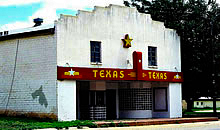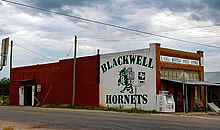Main Menu
Coke County Data
Coke County Communities & Places
Genealogy & History Links by USGHN
Important Coke County Addresses
Sponsors
Coke County Neighbors
Mitchell County, Texas
Nolan County, Texas Genealogy & History Network
Runnels County, Texas
Sterling County, Texas
Tom Green County, Texas
Other Websites
Welcome to Coke County Texas Genealogy & History Network!
Welcome to the Coke County, Texas Genealogy & History Network. Our purpose is to provide visitors with free resources for genealogical and historical research. To share your genealogy or history information, send an email to txghn@outlook.com and we will happily include it here. For other Texas Counties, visit the Texas Genealogy & History Network state website and go to the appropriate county. Thanks for visiting and good luck with your research! |
|
About Coke County, Texas...

From about 1700 to the 1870s, Comanche, Tonkawa, Lipan Apache, Kickapoo and Kiowa roamed the area that is now Coke County, Texas. These tribes settled in rockshelters in the river and creek valleys, leaving behind artifacts and caches of seeds, implements, burial sites, and petroglyphs, river shells, turkey and deer bones, flint knives, scrapers, and points.
In 1851 United States Army post Fort Chadbourne was established to protect the frontier, and the fort was manned until the Civil War. The Butterfield Overland Mail ran through the area from 1858 to 1861.
Between 1860 and the early 1880s, the only settlers in what became Coke County were ranchers attracted to open grazing land. J.J. Austin established his ranch headquarters near Sanco in 1875. Pate  Francher settled in the area in 1877.
Francher settled in the area in 1877.
In 1882, the Texas and Pacific Railway began providing service to San Angelo, and settlers started coming into the region in somewhat larger numbers. Severe drought in the 1880s led to fence cutting and its attendant issues. State authorities eventually settled the disputes.
The Texas legislature established Coke County in 1889, out of Tom Green County. The county was organized that same year, with Hayrick as county seat. The county's first newspaper, the Hayrick Democrat, began publication in 1889, but was renamed the Rustler.
In 1891, after an election, the new town of Robert Lee became the county seat. Robert E. Lee had once served at Fort Chadbourne. That same year, the county's newspaper moved to the new county seat and  was renamed the Robert Lee Observer.
was renamed the Robert Lee Observer.
Dr. D.W. Key started the town of Bronte, named after English writer Charlotte Brontë. The town was originally named Oso and then Bronco. A post office was granted in 1890 after residents changed the name to Bronte.
Silver, named after Silver Peak Summit, was settled between 1870 and 1880 as a ranching hub. Early settlers were S.M. Conner, R.B. Allen, W.G. Jameson and W.R. Walker. Dr. Joseph Eaton Reed was for 50 years the only physician. Oil discovery and related industries created a boom in Silver in the mid 20th century. After the oil camps closed down in 1966, Silver’s population slipped drastically.
Eighteen hundred ninety two saw the beginning of the town of Tennyson, named in honor of the British  poet Alfred, Lord Tennyson. It procured a post office two years later. The Kansas City, Mexico and Orient Railway built tracks north from San Angelo in 1907, which benefited Tennyson, Bronte, and Fort Chadbourne.
poet Alfred, Lord Tennyson. It procured a post office two years later. The Kansas City, Mexico and Orient Railway built tracks north from San Angelo in 1907, which benefited Tennyson, Bronte, and Fort Chadbourne.
Cotton acreage peaked in 1910, but plunged sharply during the 1920s, because of a boll weevil infestation. Expanding during the same period was the production of corn, wheat, sorghum and fruit trees. The county took a big hit during the Great Depression, when population declined.
Oil was discovered in the county in 1942, and by 1991, 209,281,131 barrels (33,273,040.9 m3) had been taken from Coke County lands. Tax money derived from oil profits helped the county to improve infrastructure and public facilities and services for its citizens. Oil production accounts for the major share of income for the county.
The county has a total area of 928 square miles, of which 911 square miles is land and 17 square miles (1.8%) is water. The population recorded in the 1890 Federal Census was 2,059. The 2010 census recorded 3,320 residents in the county.
Neighboring counties are Nolan County (north), Runnels County (east), Tom Green County (south), Sterling County (west), and Mitchell County (northwest). The county seat is Robert Lee. Other communities in the county include Bronte, Blackwell, Edith, Hayrick, Sanco, Silver, and Tennyson.
Coke County, Texas Records
Birth Records - The Texas Department of State Health Services has records from 1903 to present. Records for the last 75 years considered private and will only be provided to certain individuals. To obtain current information on who may obtain a record, how to submit a request and an official request form, see the Texas Department of State Health Services website or write to Texas Vital Records, Department of State Health Services, P.O. Box 12040, Austin, TX 78711-2040.
For older birth records you will have to write to the County Clerk of the applicable county. The existence of birth records prior to 1903 will vary widely from county to county. Local historical societies and genealogy collections in local libraries may be able to provide some information.
Death Records - The Texas Department of State Health Services has records from 1903 to present. Records for the last 25 years considered private and will only be provided to certain individuals. To obtain current information on who may obtain a record, how to submit a request and an official request form, see the Texas Department of State Health Services website or write to Texas Vital Records, Department of State Health Services, P.O. Box 12040, Austin, TX 78711-2040.
Marriage Records - The Texas Department of State Health Services can provide a verification letter of marriage for Texas marriages from 1966 to present. This is NOT a marriage license. To obtain a certified copy of a marriage license you must contact the County or District Clerk in the county or district where the marriage took place.
Local historical societies and genealogy collections in local libraries may be able to provide some information.
Divorce Records - The Texas Department of State Health Services can provide a verification letter of divorce for Texas divorces from 1968 to present. This is NOT a copy of the divorce decree. To obtain a certified copy of a copy of the divorce decree you must contact the County or District Clerk in the county or district where the divorce took place.
Local historical societies and genealogy collections in local libraries may be able to provide some information.




